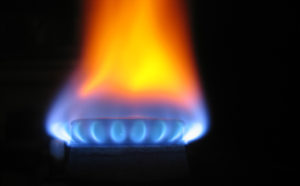 Natural gas advanced during the first trading session of 2014, after it registered the worst daily decline in eight months on December 31st. Weather forecasting models supported the energy source by calling for below-average temperatures in most of the densely-populated US areas, boosting demand for the power-station fuel as Americans crank up the heating. US stockpiles falling to the lowest since August in the seven days to December 20 also supported the market.
Natural gas advanced during the first trading session of 2014, after it registered the worst daily decline in eight months on December 31st. Weather forecasting models supported the energy source by calling for below-average temperatures in most of the densely-populated US areas, boosting demand for the power-station fuel as Americans crank up the heating. US stockpiles falling to the lowest since August in the seven days to December 20 also supported the market.
On the New York Mercantile Exchange, natural gas for delivery in February rose by 0.32% to $4.244 per million British thermal units by 10:21 GMT. Prices shifted in a daily range between $4.247 and $4.215 per mBtu. The energy source lost 4.25% on Tuesday, the steepest daily decline since May 2nd. However prices settled 24% higher last year, the best performance since 2005 and second straight annual advance.
NatGasWeather.com forecast a very cold Arctic outbreak to sweep into the central and eastern US over the next few days. By Friday morning, a few inches of snow are expected in the Mid-Atlantic and Northeast. The cold outbreak will push freezing temperatures deep into the South and Southeast, including northern Florida. During the next several nights, the Midwest will experience temperatures as low as -30 degrees Fahrenheit or even lower, with highs struggling to reach the single digits.
Early next week, a reinforcing shot of cold weather will result in continued very high natural gas and energy demand. This will again bring freezing temperatures to the Southeast, including northern Florida. According to the website, national forecasts underestimate the cold outbreak on January 5-7th, which may result in a bullish surprise. A shift in the weather pattern will start on January 8th, leading to moderating temperatures, which will reach near normal for much of the central and eastern US, temporarily easing natural gas and energy demand.
NatGasWeather.com’s extended forecast for the week ending January 15th called for a major pattern change during the second week of January. The recent extreme cold air will move to Canada, allowing high pressure to briefly push into central and eastern US. This will moderate temperatures and will ease natural gas demand, compared to very large draws, which are expected this week. A major surge in natural gas and heating demand for the highest-consumption states of the Mid-Atlantic and Northeast may start on January 14th, as the cold air from southern Canada sweeps back into the US territory.
According to AccuWeather.com, temperatures in Indianapolis may bottom on January 5th at -15 degrees Fahrenheit, 36 below the average, while the low in Chicago is expected to be -12 degrees, 31 beneath the usual. In Columbus, readings are expected to plunge to as much as -2 degrees Fahrenheit, compared to the average of 23 degrees.
Prices also continued to draw support after the Energy Information Administration reported on Friday that US natural gas inventories fell for a sixth consecutive week in the seven days to December 20, reaching the lowest level since August. Supplies slid by 177 billion cubic feet, matching the median estimate of analysts surveyed by Bloomberg and outstripping the five-year average decline of 125 bcf and last year’s 74 bcf drop during the comparable period.
Total natural gas held in underground US storage hubs amounted to 3.071 trillion cubic feet, 16.1% below last year’s level during the same week and 9.2% below the five-year average stockpiles.
Early withdrawal projections for this week’s data due on Friday range between 110 bcf and 150 bcf, in line with the five-year average decline of 121 bcf and last year’s 126 bcf during the comparable period.





